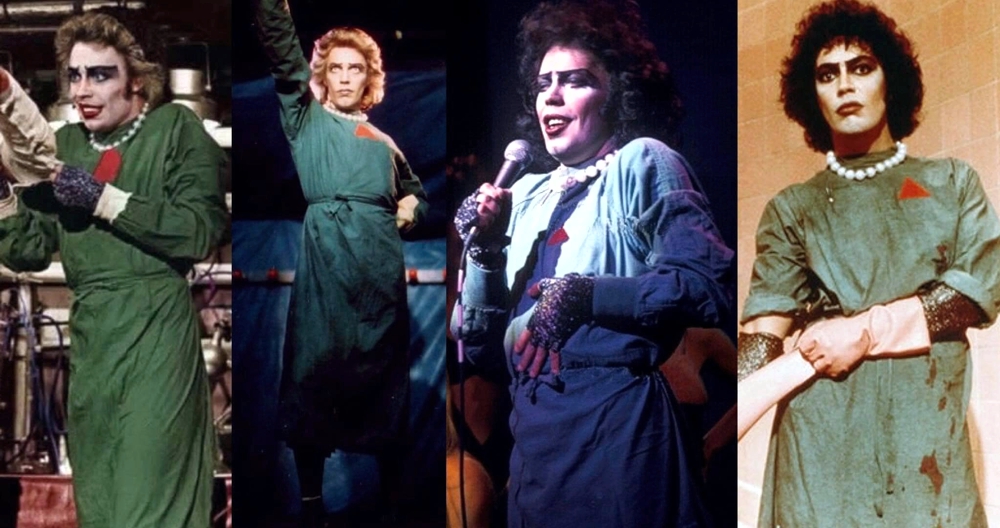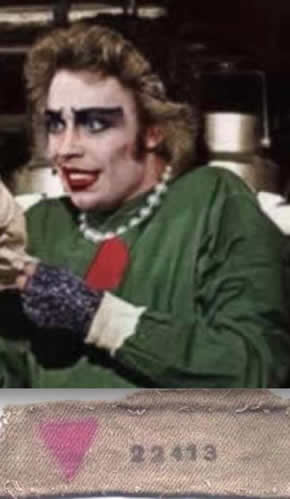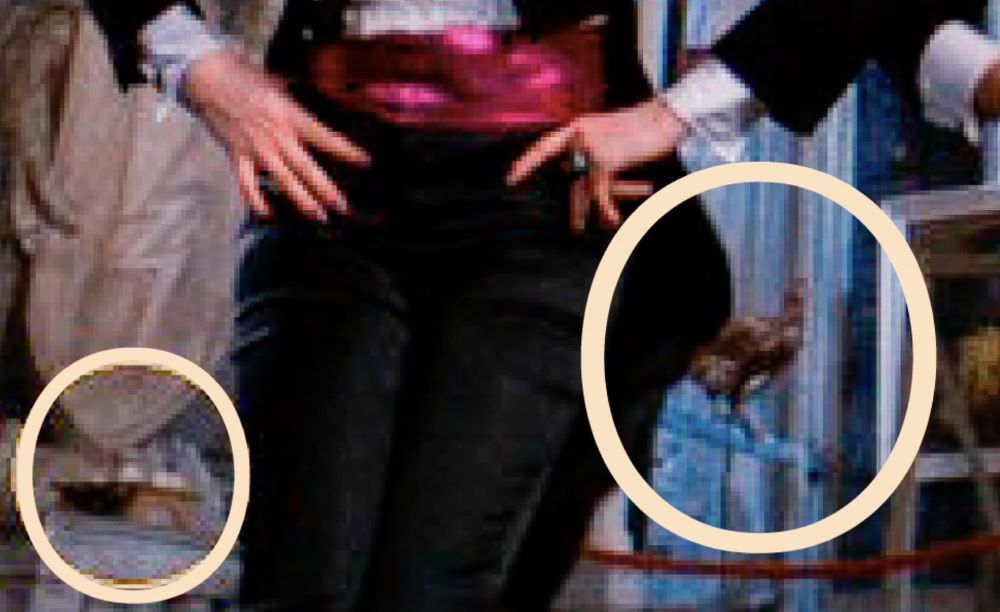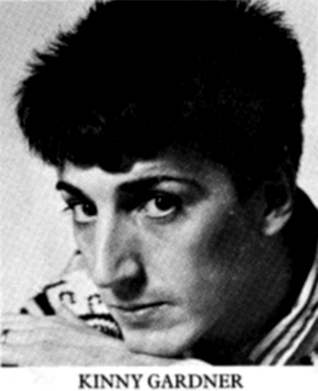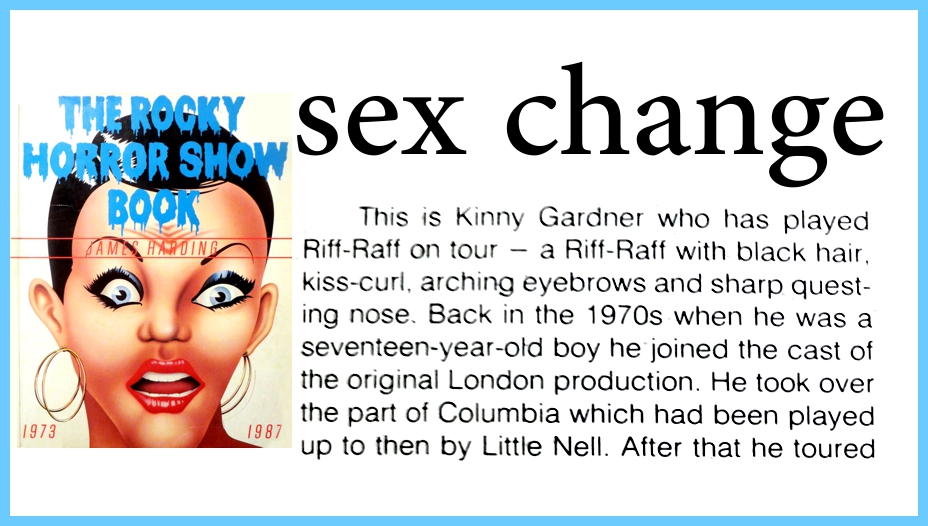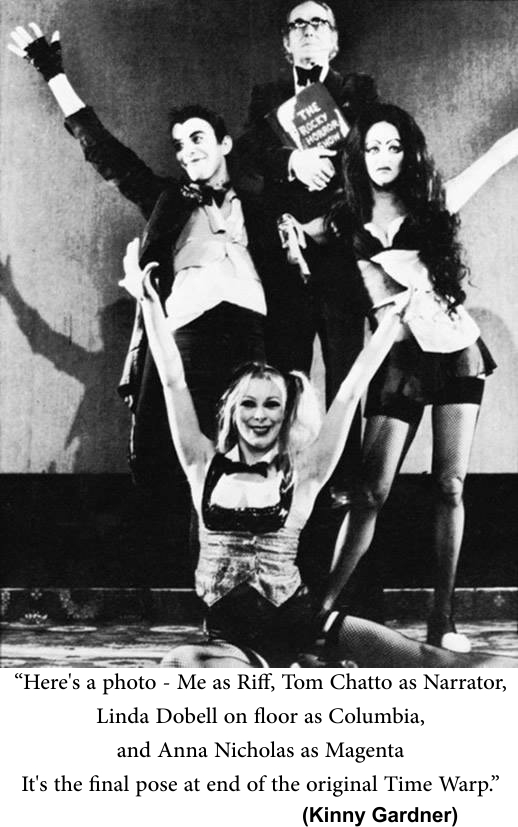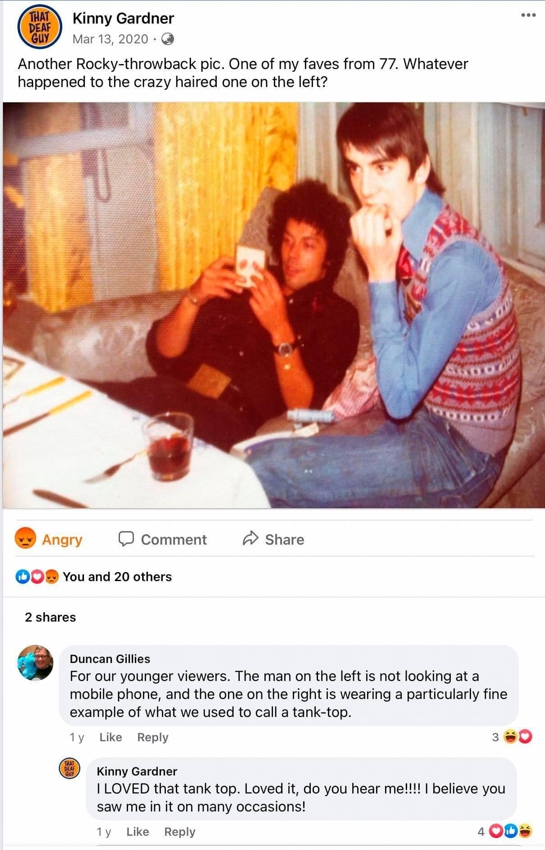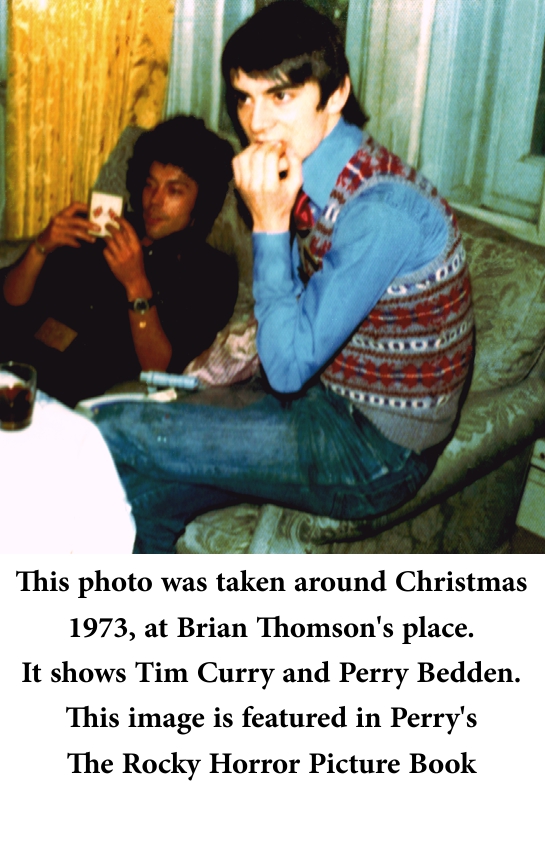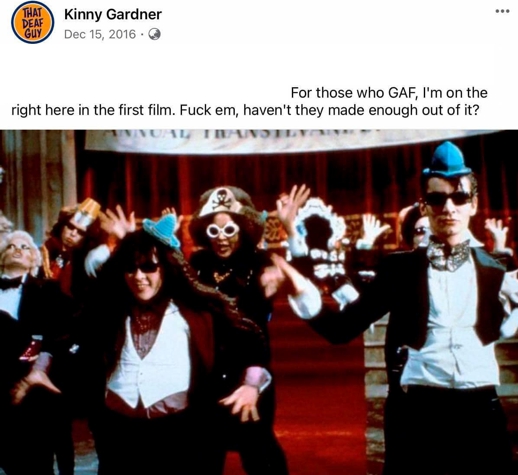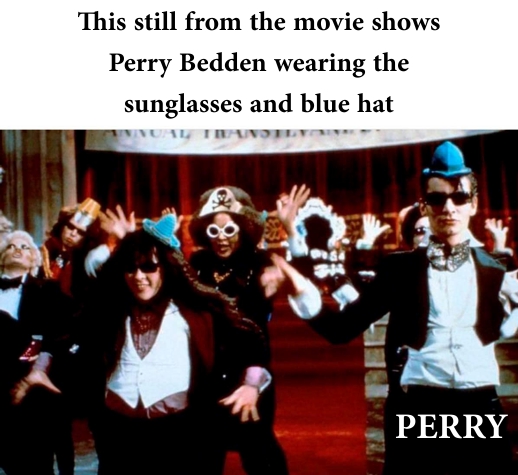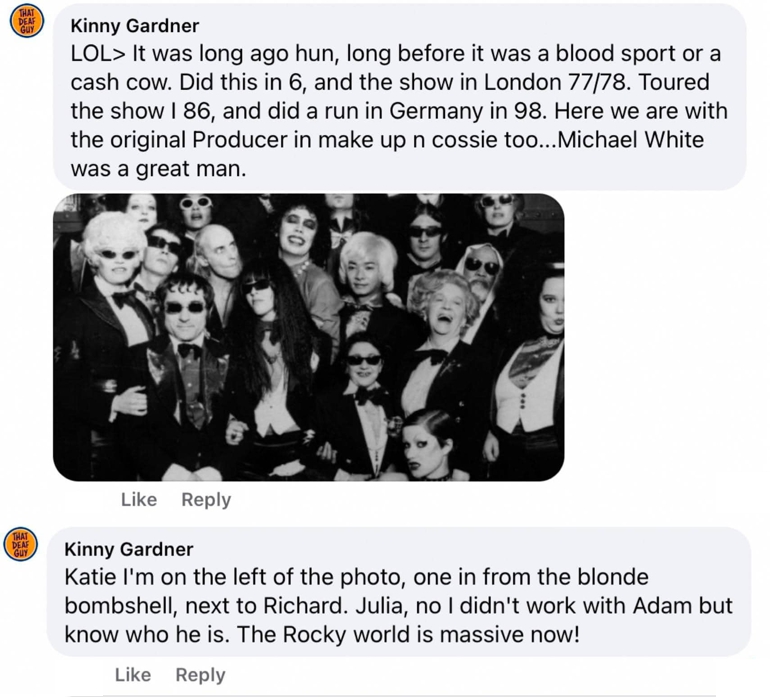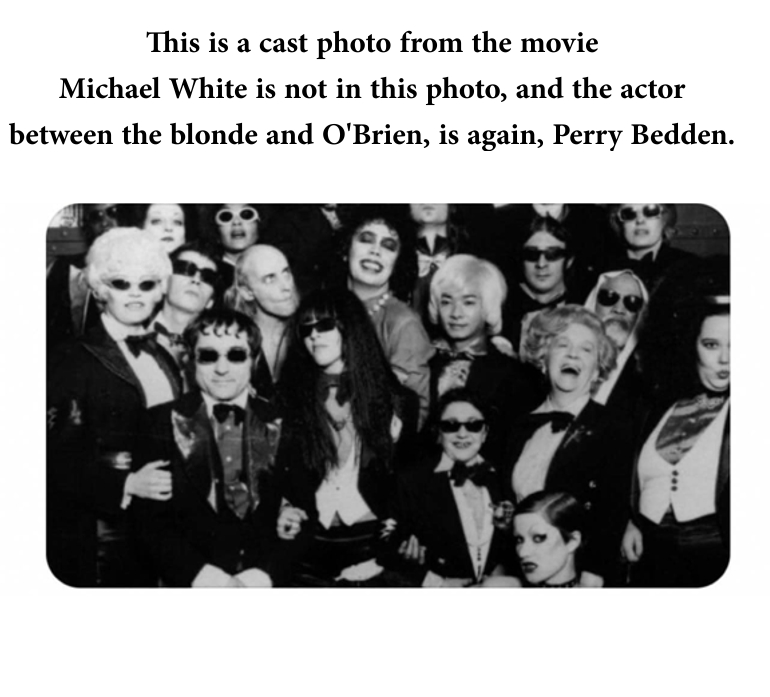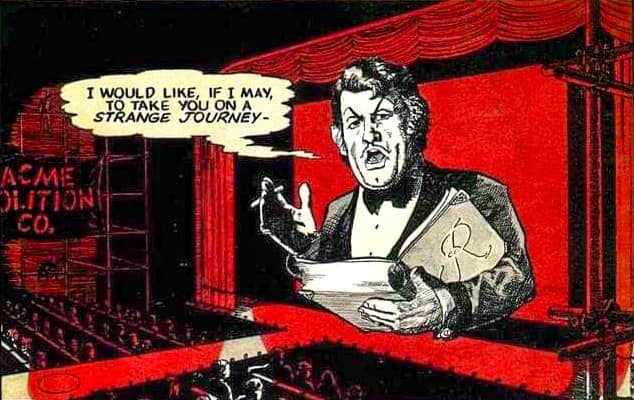 |
There are many things claimed about Rocky Horror that are wrong. They appear in articles, documentaries, and on fansites. Someone gets an idea, posts it, it gets repeated, sometimes printed. but it was never true. This is where I'll expose some of these mistakes |
||||||||||||||||||||||||
One (of hundreds) that annoy me, is the belief that the triangle on Frank’s surgical gown is a gay symbol. People say that it’s pink, when it was never pink, it’s red. They say it’s harking back to the Nazi identity triangles worn by concentration camp victims, which it most definitely isn’t. The very first surgical gown, worn by Tim Curry in London in 1973, was donated by The Hammersmith Medical School, and came with the red triangle already on it. Sue Blane liked the way it looked, and all future versions of the costume were copied from the original, green gown, with a red triangle. The triangles worn by inmates in concentration camps have nothing to do with it, and neither do the pink triangles that became a symbol of gay liberation in the 1980s. I was around in 1973, and nobody ever used a pink triangle to symbolize anything. It would have been considered extremely poor taste. The only red triangle in an upright position, worn in concentration camps, was worn by members of the armed forces, but this is purely coincidence, as the Hammersmith Medical School happened to use colored triangles on their gowns, without any connection to WWII Germany.
Sue Blane has commented on this herself, and has said that if she’d thought anyone would have associated it with Nazis, she’d never have used it.
|
||||||||||||||||||||||||

There are many places you can find claims that the cast of the film had an Easter egg hunt on set, and that not all were found, so Easter eggs appear in the movie. Some go as far as claiming that the term Easter Egg, for something hidden in a film or game, came from this event. None of this is true.
|
||||||||||||||||||||||||
|
||||||||||||||||||||||||
| Kinny Gardner is an actor from the U.K. who in 1986 played Riff Raff for the Royal Theatre Hanley, which toured Britain. | ||||||||||||||||||||||||
|
||||||||||||||||||||||||
| Kinny Gardner was never part of the Kings Road production. There was never a male Columbia during the original 7 year run. | ||||||||||||||||||||||||
|
||||||||||||||||||||||||
| It's very unfortunate that this untruth was published in a reference book | ||||||||||||||||||||||||
Kinny has also made other claims: “I joined the show in April ‘77 as Columbia. My first Frank was Peter Blake, Magenta: Anna Nicholas, Janet: Susie Blake, Brad: Hayward Morse, Narrator: Tom Chatto, Eddie/ Dr Scot: James Supervia, Riff Raff: Perry Bedden. Christie Dickason was house/company rehearsal director, Ian Blair was m.d. After a few months Perry left, and I took over Riff. My new Janet was Anne Louise (Lou) Wakefield, and Columbia was Linda Dobell who also took over as dance captain. Over the next few months, into ’78, Peter was replaced by Ziggy Byfield as Frank, and Caroline Noh took over Magenta. Also in ’78 Shaughan Seymour took over Eddie/Dr Scott, Miles Fothergill came in as Rocky (he was Linda’s boyfriend at the time) and later in the year Lauren Willoughby took over Magenta.” Throughout ‘77-‘79 the casting was always quite fluid- we would stay for a few months, bugger off, then return, sometimes for only a few weeks.” TRUTH from Perry Bedden
|
||||||||||||||||||||||||
Why anyone would try to pass off photos of someone else as themselves, and make claims of being in productions, and movies, they weren't, is baffling and sad.
Elvis Presley was never considered for the role of Eddie Mick Jagger never auditioned for the role of Frank Steve Martin was not considered for the role of Brad
|
||||||||||||||||||||||||
 |
||||||||||||||||||||||||
Can seem to make no sense. If you don’t know it’s origins or the original concepts for the movie that were dropped
In Britain and Australia, two movie franchises managed to draw some away from the TV. A series of horror movies, made by Hammer Studios, that remade the black and white Universal monster movies of the past, in color, with sex and breasts. Secondly, a series of sexy comedies called Carry On (20 were made and one used Richard O’Brien as a stuntman). The Rocky Horror Show embodied all of this. It was set in a cinema, mid-demolition. An apology was projected on the screen for the “inconvenience caused by the demolition”, the room was held together by scaffolding and covered in demolition canvas. A lone usherette is revealed to still be there, and in an homage to The Wizard of Oz, she sings about her passion for old sci-fi movies, and the “double feature” which were the staple of suburban cinemas. Then a story begins in which she is the maid. Her story is a clash between the 1930-1950 black and white thrill movies at the peak of film attendance, and the lurid, sex obsessed, Eurotrash movies of the 60s and early 70s, when the era of the cinema was ending. After a rainbow appeared at the end of Super Heroes, the story was ending, the narrator said his piece, and the usherette returns, like Dorothy to Kansas, to lament the outcome, and remind you that you can always return to the next Double Feature. A cinema in ruin, coughing up its swan song, in the guise of an usherette’s fantasy, with the cinema itself providing the setting, and props. Old light bulbs being the lightning, an old power box is the sonic transducer, an abandoned Coca-Cola fridge for Eddie to emerge from. A show about all the thrills that had played in these places. From King Kong 1933, through the old house horrors of the 40s and 50s, alien invasions, to the sex filled colorful offering from Hammer and Carry On.
There were many ideas from having an usherette, to having the opening song sung over snippets of the movies the song is mentioning. It was to start in black and white, like The Wizard of Oz. The characters from the story would appear as part of the wedding, to mimic the concept in The Wizard of Oz where those in Dorothy’s real life, are playing the characters in her dream. The movie would turn to color at Frank’s arrival, starting with his lips. When the house (seen in many Hammer movies) takes off, there’s a rainbow. Unfortunately, due to low funding, the team felt they couldn’t successfully do the black and white to color effect, and couldn’t afford the rights to all the clips needed. The whole start was changed to a pair of lips, the movie is all color, and the Wizard of Oz idea is obscured. The homage to the death of cinema isn’t evident. The original movie tag line “A Musical Dream Come True”, was changed to “A Different Set of Jaws”, and over time, as even the stage show is now a celebration of the film, much confusion runs through fandom. |
||||||||||||||||||||||||
|
||||||||||||||||||||||||
|
||||||||||||||||||||||||

